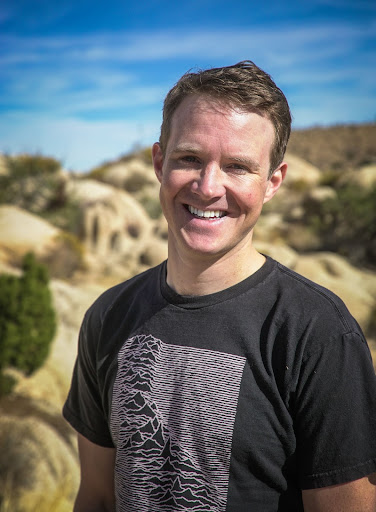
Branded content has never been more important, and the ability to build brands and connect with an audience has never been greater. As the pandemic recedes, we are at a turning point.
There are more content creators vying for your stakeholders’ attention than ever before. We all have the tools to build incredible brand equity, but we need to use them consistently and effectively to do so. Over the next decade, content producers who get it right will flourish, while those who fail will wither.
Technology has always been a key driver for the content industry. From the printing press and pamphlet to AI-generated imagery, creatives and storytellers are always quick to seize on the latest technology and use it in new and interesting ways. The modern age has brought head spinning acceleration in the power of technology, and with that a raft of new trends that will shape the content production industry.
In this article, we’ll look at two of the most significant trends: brands becoming broadcasters and the dispersion of production.
Brands as Broadcasters
One of the key points in my book, “The New Fire – Harness the Power of Video for your Business,” is that the content you produce and share can convey so much value that you should consider it as important as your main product. That might seem like a leap, but let me explain.
Austrian economist, Ludwig von Mises, argued that it is impossible to differentiate a product’s perceived value added by its brand from that added by its utility. For example, it doesn’t matter if you are served the most amazing food in a restaurant (product), if the drains are backed up and the whole place smells of sewage (brand/marketing). They are all inextricably linked as part of the experience. Your customers can’t tell the difference between the brand love you generate from your content and the brand love from your products.
This means that you can use content to build incredible brand value. Over the coming years, we will see even more brands producing content of Netflix-level quality and storytelling. The brands that do this will become extraordinarily powerful in their industries.
According to Adobe, in the last two years, over 165 million people have joined the creator economy. That includes more than 34 million in the U.S. alone—that’s over 10% of the population. No wonder the online world has gotten so incredibly crowded.
There’s also the threat posed by individual content creators becoming brands themselves. Consider who is the most dangerous threat to McDonald’s $180 billion restaurant empire right now. Is it Burger King, KFC, or clean eating trends? Nope, the most significant risk to McDonald’s is a 24-year-old man named Jimmy Donaldson. AKA Mr Beast, a YouTuber with a following of over 100 million subscribers and some 27 billion views of his videos.
One of MrBeast’s extraordinarily popular videos.
Jimmy recently opened a virtual burger franchise known as MrBeast Burger. The concept uses ‘ghost kitchens’ to produce meals to the brand’s licensed specs. The company raked in $100 million in its first seven months in business. The opening of his first brick-and-mortar store in New Jersey drew over 10,000 people and was the largest restaurant debut in history.
Or take Formula 1 racing. By the 2010s, the sport was struggling. Then, in March 2019, Netflix released the provocatively titled: “Formula 1: Drive to Survive” series. This series changed everything. The stories, the rivalries, the races came alive as never before. The documentaries contributed to the U.S. Grand Prix in Austin becoming the most attended F1 race in history with over 400,000 attendees. This is particularly startling given the fact that F1 had really struggled to establish itself in the U.S. before the series launched. In only three years, the value of Formula One has increased from $8 billion to $13 billion. Why? Because of great content, which massively increased the brand’s value. Now, understandably, other sports are looking to get in on the action, too.
You can use this insight to find and tell compelling stories around what you do. The stories you tell need to bring your own products and impact to life through content. Of course, not every business has high-octane motorsports drama at their heart, but in the ad-blocked, low-attention world, the brands with the best content win. If they don’t do it—if you don’t do it—someone else will.
The Dispersion of Content Production: The Effect of the Pandemic
The pandemic created a strange tension for multimedia content production. With stakeholders stuck at home, content became more valuable while it became harder to produce. With Slack, Zoom and cloud computing coming of age, that challenge drove the market towards more globalized, virtualized production.
These technologies made the space even more crowded for multimedia content producers. Think for a moment, what happens to a Brooklyn- or London-based editor if they need to compete with someone with the same skill set, who speaks multiple languages, and is willing to work in the same time zone from say, Delhi or Manila—particularly if they cost just 25% of the price. The pandemic has changed our willingness to source suppliers and staff remotely. That is a shift that is never going to come entirely undone. This gives companies the ability to work in timeframes that would have been challenging, expensive, or impossible before.
You need to be prepared to take small and calculated risks to produce fantastic multimedia content for your audience. To quote the founder and controller of the largest media platform on the planet, Mark Zuckerberg:
“The biggest risk is not taking any risk. In a world that’s changing really quickly, the only strategy that is guaranteed to fail is not taking risks.”
The future represents the most exciting time in the history of our industry. The tools at your disposal are more accessible and effective than ever. This means that you need to know your audience better than ever. You need to think hard about how to hook their attention with content that they will actively seek out. You need to iterate on ideas, continually improving and honing your content to make it zing.
Events, Resources, + More
The Ultimate Guide to End-to-End Content
Discover why + how an end-to-end approach is critical in the age of AI with this comprehensive white paper.
The Content Advantage Book
The much-anticipated third edition of the highly rated book by Colleen Jones is available at book retailers worldwide. Learn more!
20 Signs of a Content Problem in a High-Stakes Initiative
Use this white paper to diagnose the problem so you can achieve the right solution faster.
Upskill with Content Science Academy
Training for modern content roles through on-demand certifications + courses or live workshops.






Comments
We invite you to share your perspective in a constructive way. To comment, please sign in or register. Our moderating team will review all comments and may edit them for clarity. Our team also may delete comments that are off-topic or disrespectful. All postings become the property of
Content Science Review.